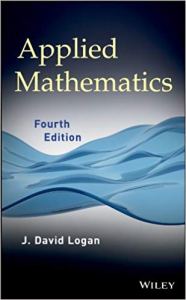Planning may be annoying, but it works
This post about the virtue of planning before taking any action or no action.
Do you plan your actions beforehand? Do you have any goals in life? Do you have dreams that are still dreams? Then you are not alone. Do you know, that making a habit of planning your actions may drastically improve the chances of you achieving your goals, if you have ones, or helping you to come up with some in the first place.
Planning in the self help movement
There are plenty of books and courses on self-help that promote planning, and I have to say that this thing is actually, useful and helpful in the short and long runs. The planning exercise is quite simple.
- Decide what you want to achieve in near term. Think of a dream you have for a long time or some goal that is somehow at the background currently.
- Write down these goals on a piece of paper or using other convenient means. While doing so state the goals to be achieved in the terms of answering Who, What, Where, When and How to be more precise, since it helps in visualizing a possible way of action. The goal should be framed in the present tense in a positive way.
- Think what you can action right away to start moving towards your goals.
- Each day review the list of the goals your composed and revise it if needed with new goals, new details.
Here comes an example
Say the goal is to proceed with acquiring working knowledge of applied mathematics. Then I write:
Goal: advancing in Applied Mathematics
- Starting today I work on the book Mathematical Modeling on evenings, at least for an hour-two, while solving as many tasks for each chapter as possible.
- When not working through that book, I read the book on Applied Mathematics and solve the tasks in it too.
- While being outside I carry at all times another popular book on mathematics for not to waste time.
- I aggregate and classify useful material on applied mathematics that I come across, for it to be easily retrieved when needed.
Planning in Software and QA Engineering
During my years at the college of engineering I had a short conversation with a PhD in Electronics Engineering who was a scientist and engineer. We talked about the differences of scientific and engineering approaches. Then he said that simply put scientist are interested in the edge cases where theory may not work and fail, while engineers are quite opposite and interested in things that work most of the time without failing. This crucial difference also applicable to the field of Software development and testing.
- Software engineers being engineers are mostly concerned with the cases when software should work, while tending to put less emphasis on the edge cases or more precisely, boundary conditions and unexpected events.
- Software testing engineers or tester on the other hand, are just like scientist more interested in checking unusual cases, when the software possibly could fail, break or behave unexpectedly.
How is that related to planning you may ask? Planning in software or hardware worlds allows you make less mistakes before actually carrying out the work. Thoroughly thinking about requirements with stakeholders, be it waterfall or scrum way of accomplishing projects, is invaluable instrument.
Just like in the example for achieving good understanding of applied mathematics, planning in Software helps by framing the purpose of each functionality to be implemented in the form of Who, What, Where, When and How questions.
The solution is quite simple
- Decide what you want to achieve
- Clearly describe it on a piece of paper with as much details as possible
- Each day review you goals and take action to move towards them
- Then you’ll surprise yourself


















